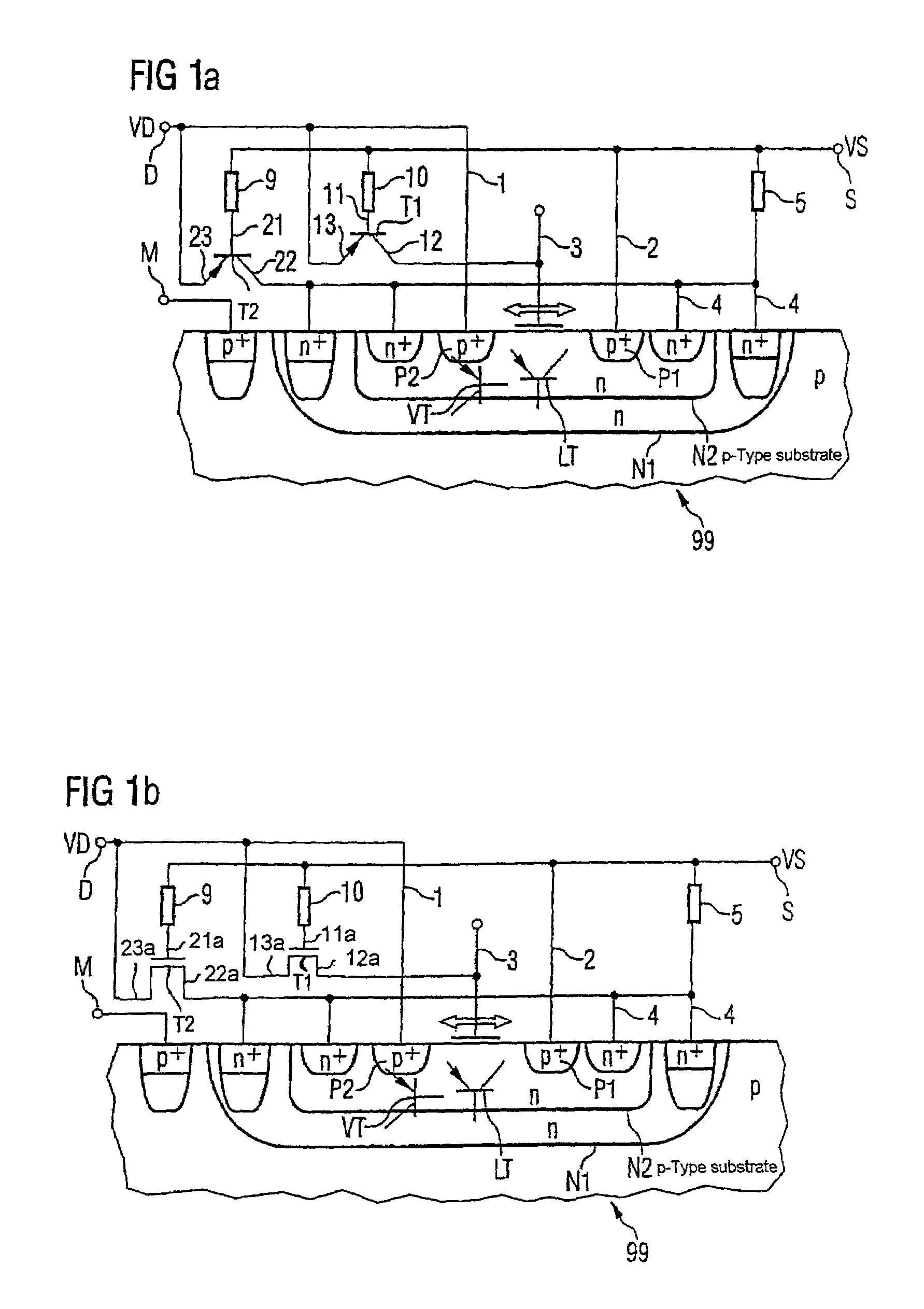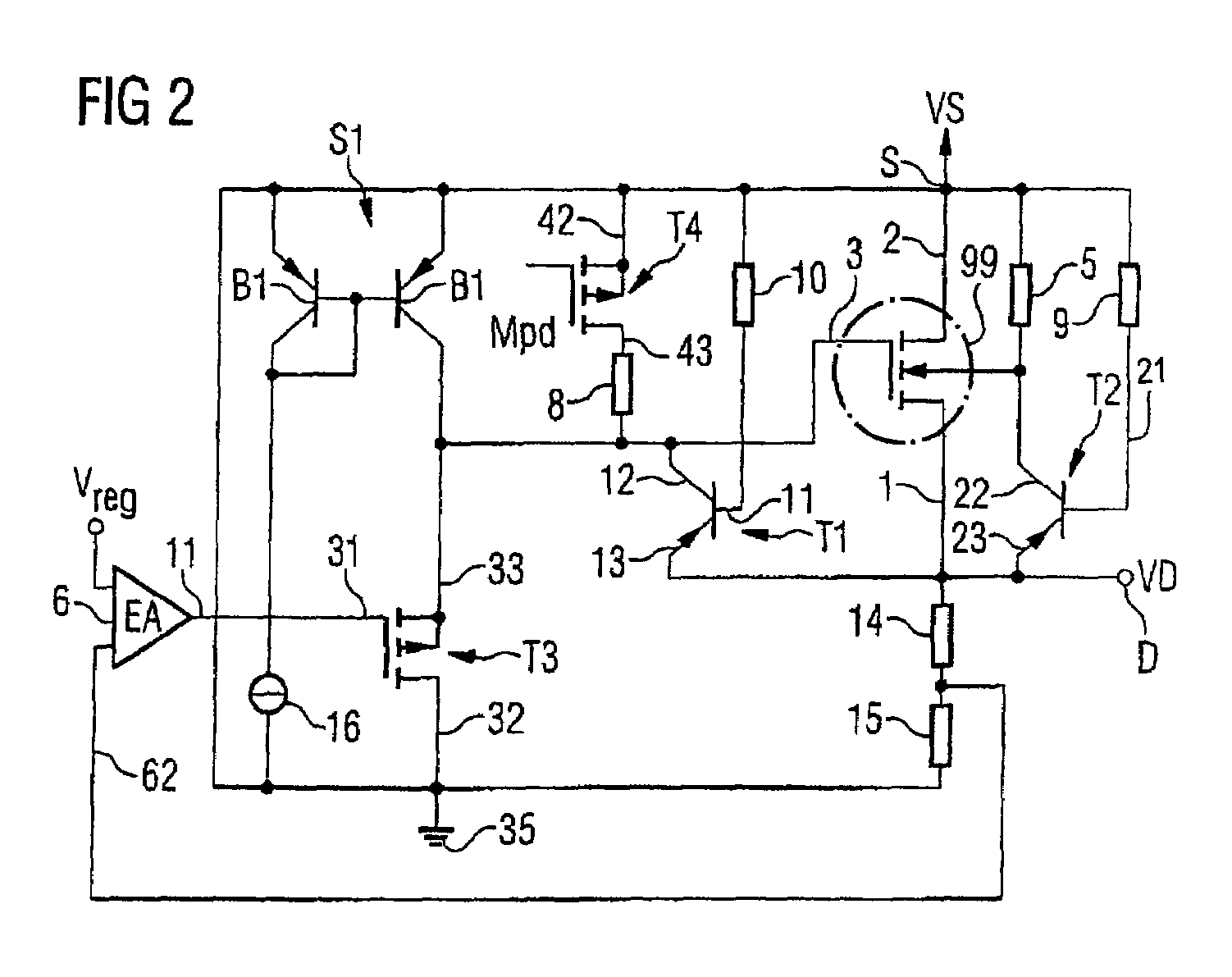Circuit arrangement for protection against electrostatic discharge and voltage regulating device having a circuit arrangement
a circuit arrangement and electrostatic discharge technology, applied in the direction of emergency protective arrangements for limiting excess voltage/current, semiconductor/solid-state device details, pulse techniques, etc., can solve problems such as undesirable current flow, mos transistor problems, and circuits connected to drain terminals, so as to reduce current flow
- Summary
- Abstract
- Description
- Claims
- Application Information
AI Technical Summary
Benefits of technology
Problems solved by technology
Method used
Image
Examples
Embodiment Construction
[0027]FIG. 1a shows a circuit arrangement having a PMOS field-effect transistor in which an undesirable current flow is prevented.
[0028]The PMOS transistor 99 is formed in a doped semiconductor substrate. The semiconductor substrate is p-doped and contains a heavily p-doped region p+ for a connection to ground. Within the substrate, an n-doped region is formed as a well which, for its part, is subdivided into two n-doped partial regions N1 and N2 having different doping concentrations. The region N2 is an n-doped partial well in which two heavily p-doped regions P1 and P2 are embedded. The region P1 is called the source of the PMOS transistor 99 and furthermore has a source terminal 2. The region P2 represents the drain and contains the drain terminal 1. Between the source region P1 and drain region P2, a charge carrier channel can form through application of a potential to the control input 3 and the control electrode (not shown here) or a channel that has formed can be altered. P-...
PUM
 Login to View More
Login to View More Abstract
Description
Claims
Application Information
 Login to View More
Login to View More - R&D
- Intellectual Property
- Life Sciences
- Materials
- Tech Scout
- Unparalleled Data Quality
- Higher Quality Content
- 60% Fewer Hallucinations
Browse by: Latest US Patents, China's latest patents, Technical Efficacy Thesaurus, Application Domain, Technology Topic, Popular Technical Reports.
© 2025 PatSnap. All rights reserved.Legal|Privacy policy|Modern Slavery Act Transparency Statement|Sitemap|About US| Contact US: help@patsnap.com



